How to make Manhattan-style Fermented Pickles with Garlic and Dill! An easy step-by-step guide to making the most flavorful, crunchy, tangy pickles full of healthy probiotics with only 20 minutes of hands-on time! The pickle brine is like a “tonic” -drink a shot daily to support a healthy gut! Video.
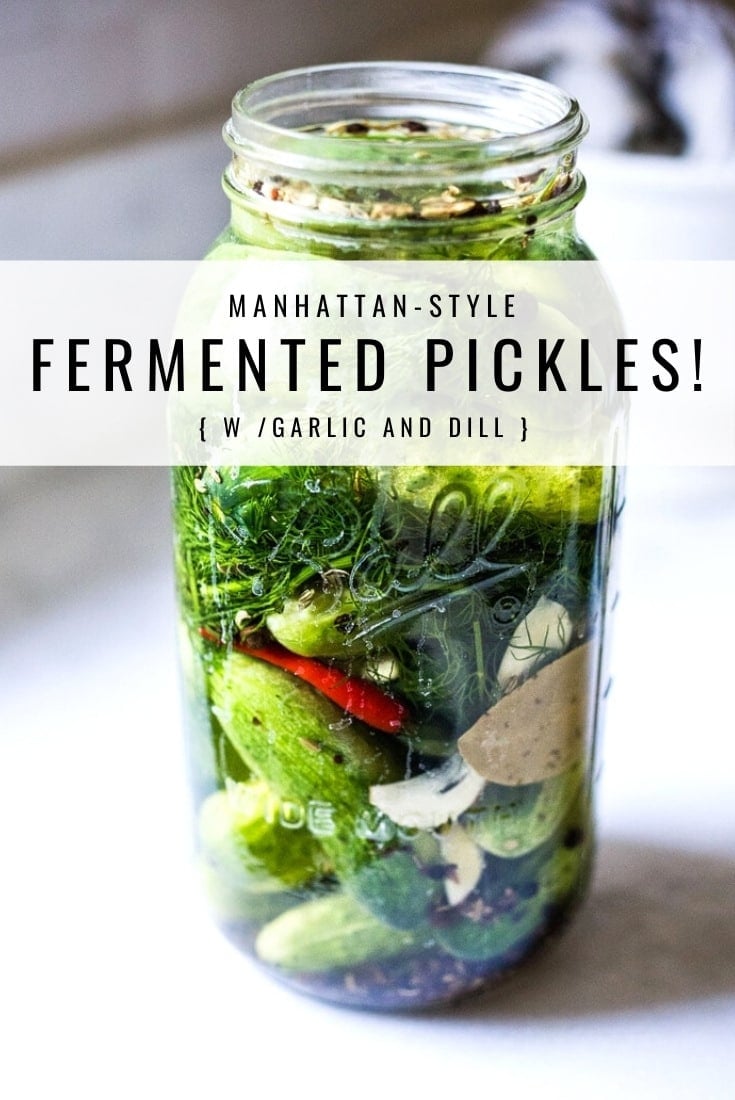
What happens when people open their hearts? They get better. ~Haruki Murakami
I’m excited to share this easy recipe for Fermented Pickles with you! If you are a crunchy pickle lover like me, you will be in heaven. Seriously, these are the best! These Manhattan-style “half-sour” fermented dill pickles are crispy, crunchy, flavorful, and oh-so alive!
Fermented in a salt brine, rather than vinegar, they get their delicious tanginess from light fermentation rather than vinegar.
Full of healthy, gut-healing, immunity-boosting probiotics these little guys are perfect as a low-calorie snack, or sliced and added to sandwiches or served as a tasty side.
Not only are they delicious and incredibly EASY to make, they are also incredibly good for us!
And as crazy as this may sound to some, the fizzy brine itself is like a healing tonic to me – I love to drink a shot of it- especially when I feel like my immunity needs a boost! So flavorful and totally energizing. Or try a Gin and Brine!
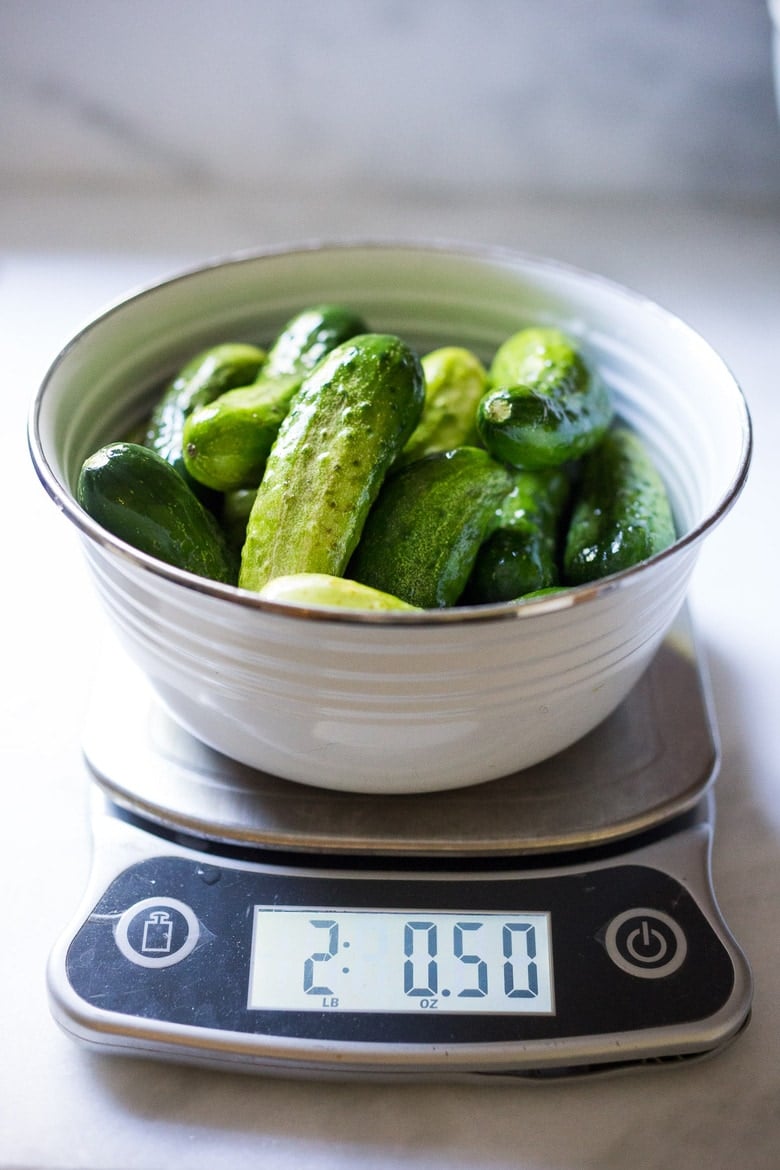
What you’ll need
- Pickling Cucumbers- Small and short (4 inches long) with thin bumpy skin, crisp texture, small seeds, a blocky shape and color gradient from light to dark. Varieties include Kirby, Calypso, Royal, Pickalot, National Picking, Adam Gherkin, Sassy, Eurika, Jackson, Boston Pickling, Northern Pickling… to name a few. You’ll need 2 lbs of “pickling cucumbers.” This recipe makes one large 1/2 gallon jar (or use two quart-sized jars) – a relatively small batch. Pickling cucumbers are most easily found at your local farmers’ market. Ask the farmers if they have “pickling cucumbers” they can help direct you to the right ones. Your pickles will only be as good as your cucumbers, so choose wisely! Make sure they are roughly the same size -about 4 inches long with 1 1/2-inch to 2-inch diameters – so they fit in the jar nicely and ferment at the same rate. I handpicked each one. They should be fresh and crisp with no soft spots.
- Salt-use fine sea salt, or fine Himalayan Pink salt
- Garlic and Onion – we load this up with 10-20 garlic cloves for the best flavor!
- Fresh Dill – use a big handful!
- Spices: Ground Turmeric ( adds fresh flavor) fennel seeds, mustard seeds, whole peppercorns, coriander seeds, whole allspice, dill seeds and celery seeds. Feel free to change or embellish! I added a couple of chilies for a little heat.
- Optional Tannic Acid: Bay leaves, grape leaves, oak leaves, or a couple of slices of fresh horseradish root. Cucumbers contain enzymes that soften them. To prevent this add a few bay leaves or a grape leaf to the jar.
- Two-Quart Mason Jar ( 8 cup mason jar)
- Fermentation weights
- Optional: Air lock, gasket, metal ring
How long does it take to ferment pickles?
These 3% Brined, half-sour crunchy pickles take 3-5 days of fermenting time.
The Brine: SALT TO WATER RATIO
- This recipe is a 3% salt water brine, which is considered “safe”. It equals 7 grams of salt per 1 cup of water. Or, 1 heaping teaspoon salt (1 1/4 teaspoon salt ) per 1 cup of water. This ratio allows one to drink the brine (like a shot) because it is not too salty and is designed for a shorter fermentation period ( 3-5 days). Crunchy, lightly fermented pickles!
- If you want a stronger brine for a longer ferment, feel free to go up to 4.5%. So for example, 3.5% Ratio= 9 grams of salt per 1 cup of water, 4.5% brine =10.8 grams of salt per 1 cup of water. For a 4.5% brine, half-sour pickles take 5-7 days, full sour pickles 14-21 days.
Fermented Pickles (step-by-step Instructions)
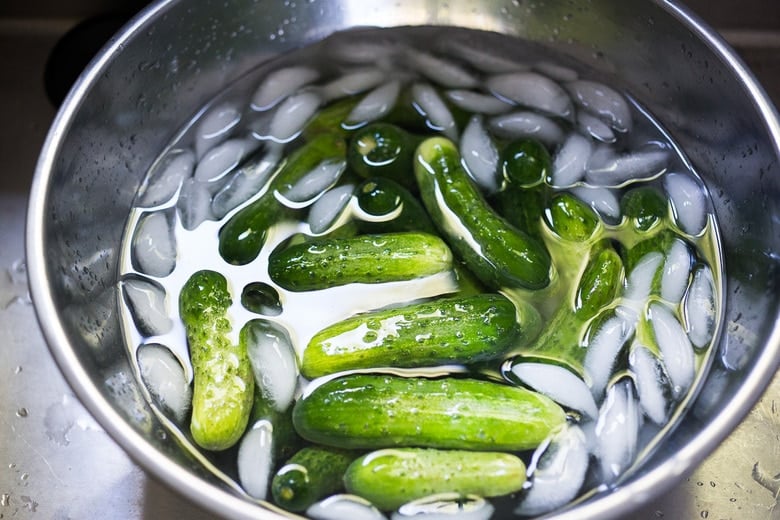
Step 1: Wash the cucumbers, slice off 1/16 inch of the blossom end, and soak them in an ice bath for 15-30 minutes to firm and crisp them up. There are enzymes in the blossom end that can make your pickles soft, so be sure to remove them.
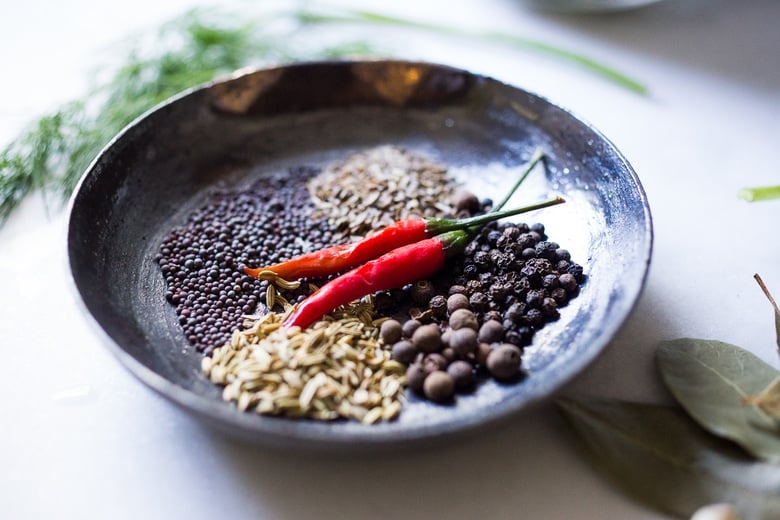
Step 2: Slice the garlic lengthwise and gather your spices.
Because these fermented pickles are left whole, you want the brine to be extra flavorful. I add a lot of garlic… 10-15 cloves, sometimes 20! Fermented Garlic is really good for the gut too!
Step 3: Place the spices on the bottom of the jar, then sliced garlic, fresh dill and bay leaves, and then add 2 layers of cucumbers, end on end, in a large two-quart jar (half-gallon). Press everything down.
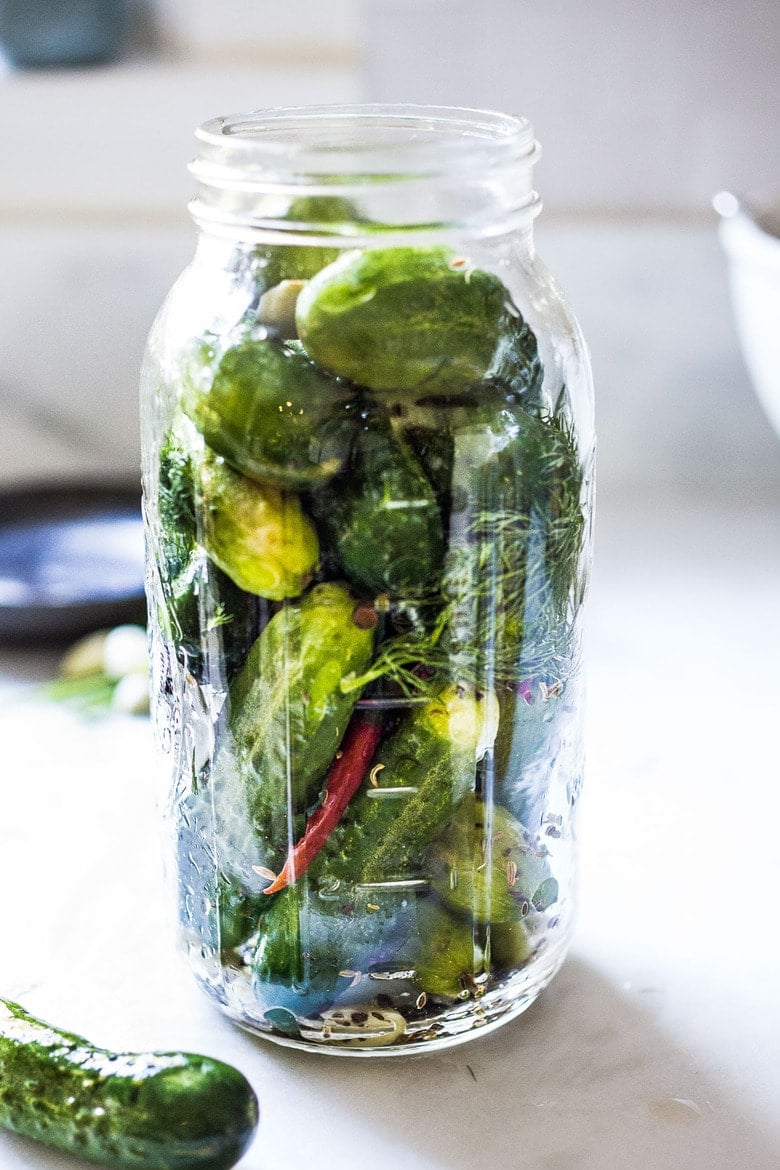
Step 4: Carefully measure and mix salt and water to create the 3% salt water brine- then pour this brine over the pickles leaving 1 1/2 inches of headroom.
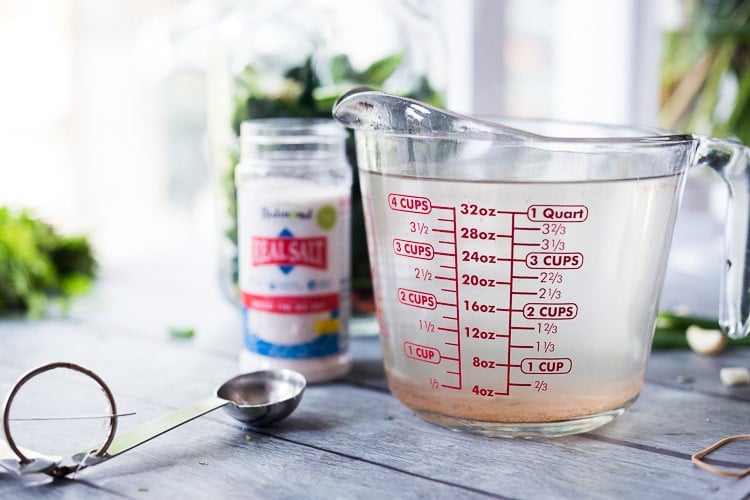
How salt works in fermentation:
- In a nutshell, using the right ratio of salt in fermentation encourages the growth of healthy bacteria while at the same time killing off bad bacteria. You want to be precise when measuring the salt and water in these kinds of recipes.
- Too much salt may kill off ALL of the bacteria -preventing fermentation.
- Too little salt will allow bad bacteria to keep on living. It is a fine balance. 😉
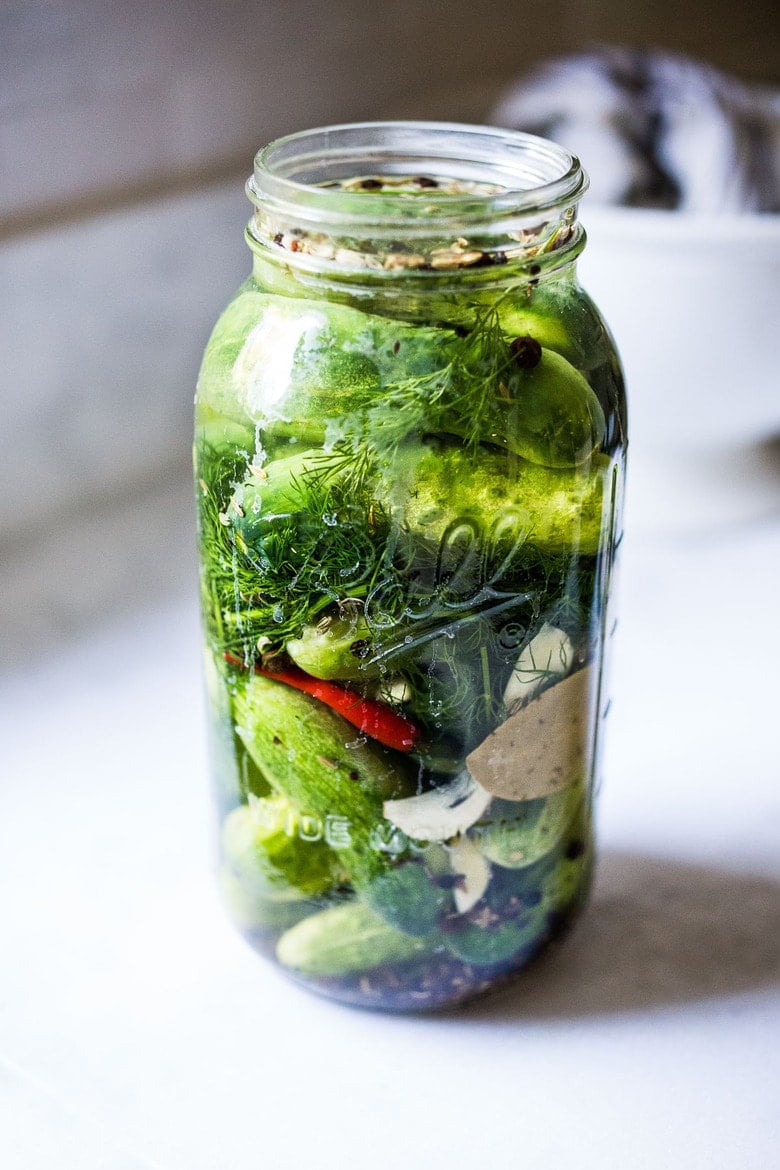
Step 5: Weigh down the cucumbers so they are completely submerged under the liquid, using a couple of fermentation weights, or a small zip lock bag filled with a little water (in a pinch).
MOLD: If the cucumbers or seeds are not submerged under the brine and become exposed to air- they can develop mold, so spoon any floaters out with a slotted spoon. Most seeds should stay submerged.
Step 6: Cover loosely with a lid or towel (to prevent bugs or flies from coming in, and to allow gases to escape) place in a bowl or pan to catch any overflow, and place in a cool dark place for 3-7 days, like the basement. You can also use and airlock lid- which allows air to escape, but nothing to fly in.
Step 7: Check after 2-3 days. Look for signs of life: bubbles/ or cloudy water. A cloudy brine is GOOD. Tap the jar and see if bubbles rise to the top. Check to see if any brine overflowed into the bowl ( both signs of life). This often takes about 3-5 days, I find 4 days is the “sweet spot”, depending on temperature. Cloudy brine is delicious and nutritious!
Step 8: Place the jar in the fridge to further slow the fermentation with a loose lid. They will continue to ferment very slowly and will keep indefinitely.
Expert Tips:
- Ferment at cooler temps (60-70F) to keep pickles crisp. If your home is hot, try placing in a cooler with ice. Take the temp of the brine.
- The longer you ferment them (unrefrigerated), the tangier they will get. But they will also get softer. I like them crisp, but you may want them tangier and softer. You can taste them at any point after you see bubbles.
- Smell: your ferment should smell tangy, garlic and fresh. If you notice anything foul or unpleasant, your ferment may have been contaminated: most commonly by dirty hands, dirty utensils, or a dirty jar.
- If you want to create a “fizzy” brine for drinking, tighten the lid, and burp daily if leaving out. You can tighten the lid in the fridge, but burp weekly. This will create a little pressure and give it some effervescence.
- Anything that touches air- may mold. Always fish out any floating spices with a slotted spoon to prevent this.
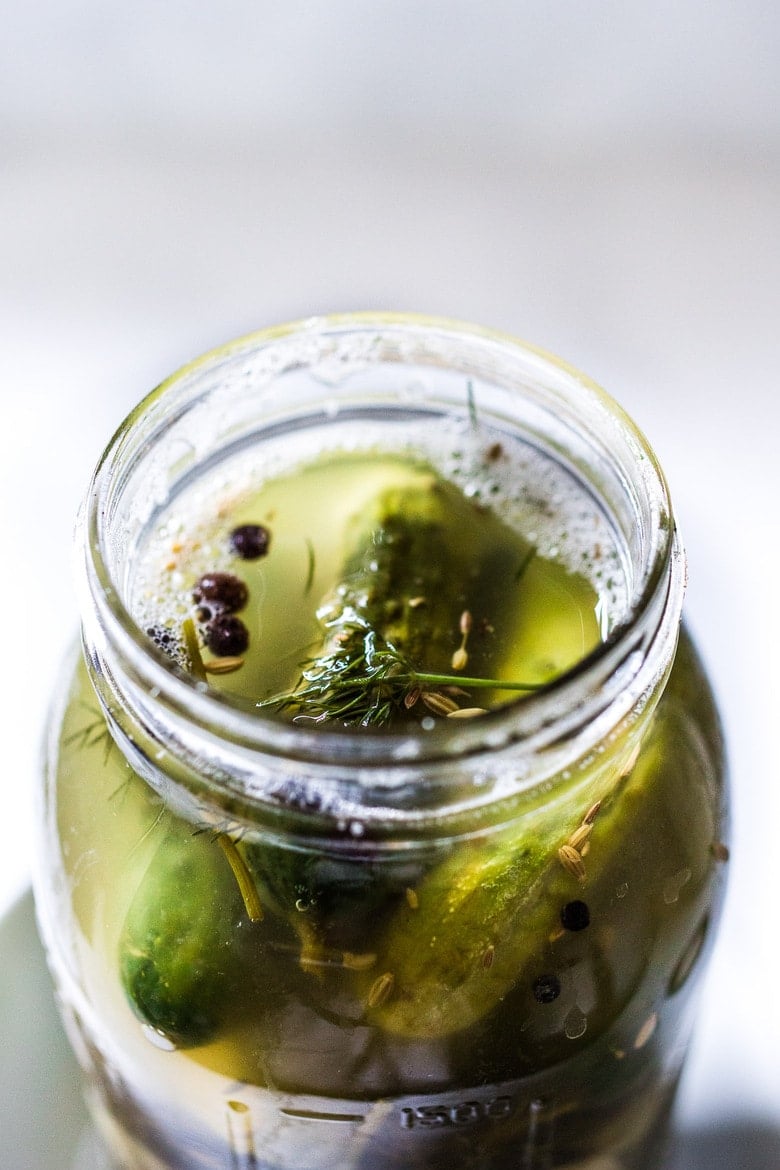
Once they are cold, give them a taste. They should be crunchy and flavorful! The brine is deliciously tangy, salty, and effervescent -so tasty and full of gut-supporting probiotics. The garlic is tasty too! Eat it!
I find myself often drinking shots of the brine! I also make this Gin & Brine Martini!
Let me know how you like this one in the comments below!
xoxoxo
More Favorite Ferments!
- Curtido & Cultured Salvadoran Slaw
- How to make Sauerkraut (Simple Cultured Cabbage)
- Beet and Cabbage Sauerkraut
- Cucumber Kimchi Pickles
- Turmeric Sauerkraut
More from Feasting at Home
How to make Fermented Pickles| 45-sec video
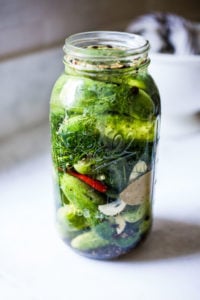
Homemade Pickles with Garlic and Dill
- Prep Time: 4 days
- Total Time: 4 days
- Yield: ½ gallon
- Category: fermented, preserved
- Method: fermented
- Cuisine: American
- Diet: Vegan
Description
How to make Manhattan-style, fermented Dill Pickles! A simple recipe for making the most flavorful, crunchy, tangy, garlic dill pickles with only 15 minutes of hands-on time. Full of healthy, gut-healing probiotics these little guys are perfect as a low-calorie snack, or sliced and added to sandwiches.
Ingredients
- 2- 2 1/2 lbs pickling cucumbers– all similar size ( 5 inches)
- 5 cups filtered water or tap water (that is not overly chlorinated)
- 2 tablespoons fine sea salt or Himalayan salt — or basically one heaping teaspoon fine sea salt (7 grams) per one cup of water, for a 3% brine (see notes)
- 1/4 teaspoon turmeric (optional, adds a “fresh” flavor)
- 1 teaspoon each: fennel seeds, coriander seeds, allspice, peppercorns, dill seeds, mustard seeds, celery seeds- and feel free to add more peppercorns!
- 10-20 garlic cloves, sliced (or double for extra garlicky)
- 1/2 onion, thinly sliced (optional)
- big handful of fresh dill
- 1-3 fresh red chilies – or dried arbol chilies, or add chili flakes (all optional)
- 3-4 bay leaves (or a grape leaf or oakleaf) – these are sources of tannic acid to help them stay crisp.
Instructions
- Prep Cucumbers: Rinse the cucumbers, remove 1/16-inch of the flower end of each cucumber (keeps them from getting soft) and place them in an ice-water bath, to crisp them up (15-30 minutes). Leave them whole.
- Make the brine: Mix salt (2 tablespoons) and 5 cups cold water until dissolved.
- Wash your hands, jar and any utensils. No need to sterilize, just clean!
- Assemble: In a large, clean two-quart mason jar, place all the whole spices into the bottom. Add the dill, garlic and onions or turmeric if using. With clean hands, pack one layer of cucumbers tightly, standing on end, then add the bay leaves, then add the second layer of cucumbers standing on end.
- Press everything down, leaving 1 ½ inches of headroom. Pour the salt water brine over the top and weigh down the cucumbers with fermentation weights so they are submerged under the brine. Remove any spices that may have floated to the surface (which can mold).
- Cover the jar loosely with a lid or with a cloth- basically, the pickles will bubble and you want air to be able to escape.
- Place the jar in a pan or bowl to collect any overflow and leave it in a cool dark place (60-70F) for 2 -3 days (a basement, or lower kitchen cupboard) and check for bubbles or overflow, indicating fermentation. Half sour pickles will take 3-5 days with crisp, white interiors. If is colder than 65F, it may take longer, if hotter, they will ferment faster. Full sour pickles will take 14-21 days (see notes for a stronger saltwater ratio).
- After 2 days, check for signs of life: bubbles, overflow, or clouding. Tap the jar, and see if tiny bubbles rise to the top. I usually ferment for 3-5 days. Longer ferments will yield tangier pickles but will get softer as they ferment, and lose their vibrant color. Up to you. You can taste them at any point after you see bubbles, and ferment longer if you like. The brine will get cloudy as it ferments- this is a good sign! Once you see active bubbles, you can at this point place the jar in the fridge, where it will continue to ferment, but much more slowly. Keep the pickles submerged.
- Once chilled, give them taste. They should be crispy and flavorful with a little tang. (At this point, if you want a tangier or softer pickle, you can absolutely pull them back out again and ferment for a few more days longer if you want.)
- If you like fizzy brine, tighten the lid, burping every week or so or try using an airlock. If you don’t want to think about it, give the lid one loose twist, so it’s on there, but gases can escape.
Notes
If you need more brine, make sure you use the same ratio- 1 heaping teaspoon sea salt per one cup of water.
If using a grape leaf, place it on the side of the jar, then layer the remaining ingredients.
If pickles turn out too soft- it may be due to too warm of temperature during fermentation, or the flower end wasn’t removed (the flower end of the cucumber has enzymes that can soften pickles).
Feel free to use 2, quart-size jars, dividing cucumbers, spices and brine between the jars.
BRINE: This recipe is a 3% salt water brine, which is considered “safe”. It equals 7 grams of salt per one cup of water. I’ve had really good luck with this ratio – and this ratio allows me to drink the brine (like a shot) this is really healthy – full of good gut-supporting bacteria!
If you want a stronger, saltier brine, feel free to go up to 4.5%. For a full sour pickle (14-21 days) use a 4.5% brine.
- 3% ratio = 7 grams salt per 1 cup of water. (1 1/4 teaspoon fine sea salt, per 1 cup water)
- 3.5% Ratio= 9 grams of salt per 1 cup of water. (1 1/2 teaspoon fine sea salt, per 1 cup water)
- 4.5% ratio 10.8 grams of salt per 1 cup of water. (2 teaspoons per cup of water)
Cutting the Cucumbers: I recommend leaving them whole. The texture is much better. After your first successful batch, feel free to experiment.
Nutrition
- Serving Size:
- Calories: 16
- Sugar: 1.3 g
- Sodium: 297.4 mg
- Fat: 0.2 g
- Saturated Fat: 0 g
- Carbohydrates: 3.7 g
- Fiber: 0.5 g
- Protein: 0.7 g
- Cholesterol: 0 mg
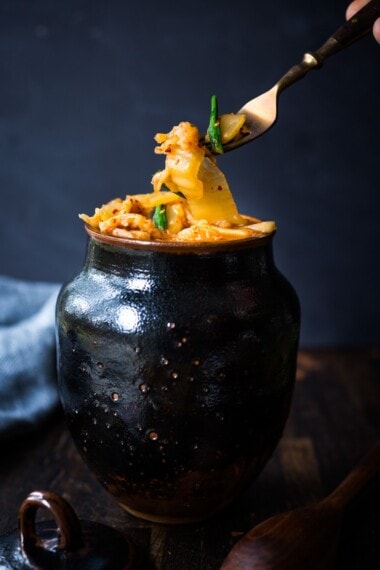
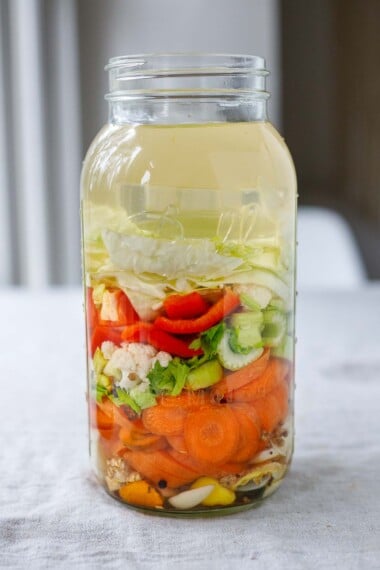
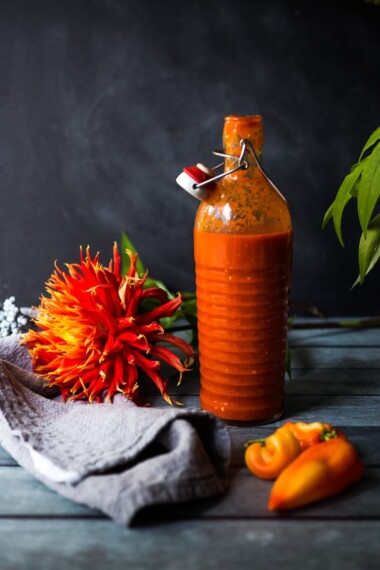
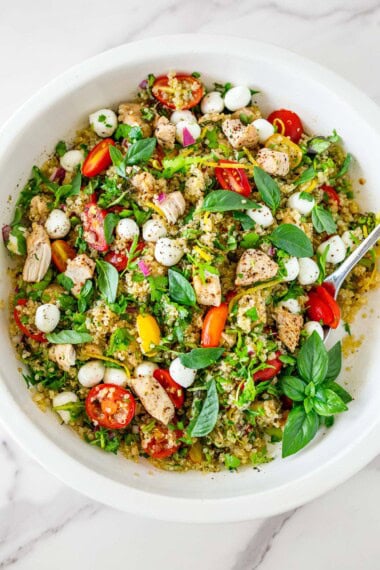
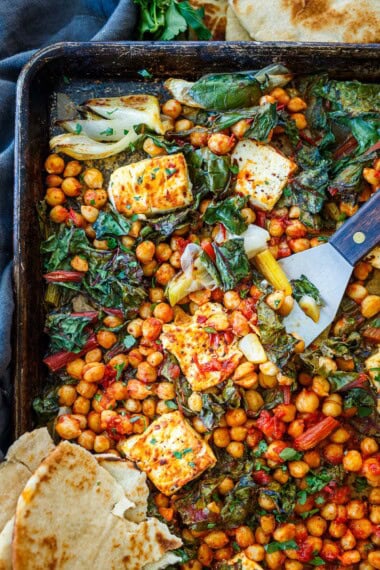
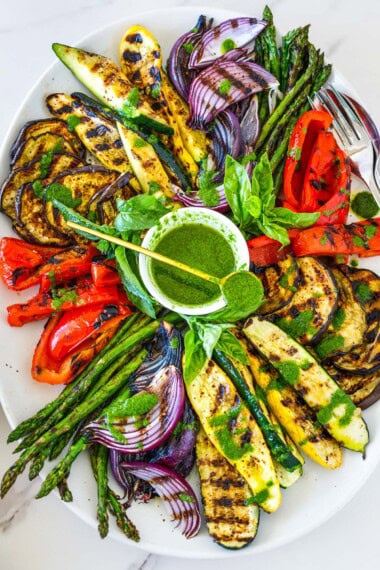



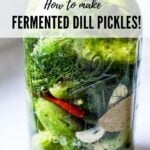
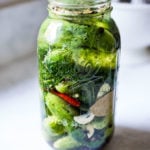
Hello! Love fermenting and excited to use this recipe. Question: can I do thick slices of the cucumber instead of whole? Will I need to alter the recipe?
Thank you
That should be fine! No altering necessary.
Thanks for the how to recipe. Sounds perfect.This is the first time I’m making my own half sour lacto-fermented pickles. I’m sure they will be great, especially using our own pickling cukes. We have so many all at once, I’m going to use a crock from the slow cooker for a container.
Oh perfect!
I am looking to make a large batch, in a 2 gallon container. These would be for long term storage in the refrigerator. Can/should the brine be diluted after reaching the desired taste to stop the fermentation?
I wouldn’t dilute the brine. It’s a pretty salt ratio. 😉
Do you have a recipe for sauerkraut as well?
Sort of. 🙂 There is one for Turmeric kraut and Bett-Cabbage kraut, just type in search bar.
I’ve just started making pickles with your recipe. It’s been five days, and the brine is cloudy and the aroma is definitely dill pickles. What concerns me is I have not noticed any bubbles. Is that okay? (PS: I’m in Arizona and placed these pickles in a dark closet with a room temperature of 73 degrees Fahrenheit.)
The cloudy water indicates fermentation. No bubbles when you tap the jar?
Can I use minced garlic, do you think?
yes!
Good recipe, I have been making pickles for years. I always add about 1 tsp. of cider vinegar per quart of water. Have never had spoilage. I ferment on the counter for 6-7 days at 75 degrees, and cap the jars when the color and aroma are ripe. I store the jars in a 42 degree fridge for about 2 months, then move them to a 34-35- degree, where they are amazing after a full year of storage. Are the BAY LEAVES dried or fresh?
thank you, T.
Sounds perfect, thank you!Love the addition of vinegar, will have to try!
Hi. Where do I get unchlorinated water? Sorry to be so basic.
Filtered water or bottled. 🙂 Some people use tap water and it is fine. I guess it just depends on where you live.
For hot humid climates, can you ferment in the refrigerator instead? I assume that would take longer than 4 days. Looking forward to trying it out. Thank you!
I’d still leave it out, even for 1-2 days to get it going.
I am totally new to pickling. My husband and I have a small refrigerator, so keeping these refrigerated is unrealistic. Is there a way to process half-sour pickles for longer, un-refrigerated storage?
There is I think but I’m not an expert in the canning arena. Also I believe canning would kill all the bacteria, good bacteria too.
I’m confused. Do the 5 cups of water need to have salt as well? Or just the first cup of water?
Hi, you are just dissolving the salt in one cup, then mixing that with the 5 cups. So yes, eventually all will have salt. 🙂
A white cloudy milky like substance has settled at the bottom of the jar. Is this normal and are they safe to eat? Thanks.
That is normal and they are safe to eat. 🙂 do you see bubbles when you tap the jar?
Can you reuse the brine to pickle another round of cukes after eating the pickles?
In theory it seems like you could. I haven’t tried this personally though.
i must have done something wrong because mine came out way to salty. ill have to try again some other time. maybe the weight was off.
Oh no! sorry about that.
Hello, this recipe looks incredible and I can hardly wait to try it! I am wondering how long these jars of pikles will last? I want to make several jars during the summer and enjoy them over the winter and next spring. So, will they last that long if kept in my finished basement? Thank you!
Hi Steven, so these will keep for months, but in the fridge. I don’t think they would be as good fermented that long (they would lose their crunch) But I guess you could try with one jar and test and see?
These came out great! Crunchy and tasty! I didn’t have grape leaves and google said oak leaves would work, so I used those for crispiness.
Totally meant to rate it 5 stars.
Perfect! Glad you liked!
I’ve tried many recipes but am so excited to try this one! Can I cut the pickles into spears before 0putting them in the jar?
Yes, that should be fine!
Thankyou so much for this recipe, I’ve made about 6 gallons now, most batches have been magnificent! This is my go to for fermented pickles now 🙂 💚💚
Wow! Awesome Corina!
I used another recipe and didn’t know how to keep the cukes completely submerged underwater. Thank you for letting me know a way to do it. DO I NEED TO THROW OUT THE CUKES if their ends are sticking up out of the water, or just cut off the part that was exposed?
Just see how they look and decide. The tips may mold if exposed to air. But mold really doesn’t scare me. Up to you.
Working on a new batch (#3) and wondering about tannin. I have lots of hickory trees. Anyone know how the tannin in hickory leaves measure up when compared to grape leaves, oak leaves, bay leaves?
Thanks.
Great question Don! I’m not sure but someone else out there might!?
If you look in some library archives (the Umass culinary archive for cookbooks for example) you’ll see russian pickle recipes that use oak and grape leaves.
Just started some…made a 2.5 gallon jar and a half gallon jar…..I used green tea bags instead of the grape leaf or bay..but there was bay leaf bits in the pickling spice mix I buy at Natural Grocers…
I harvested 24 lbs of cucumber now need to go get another large jar😁
I think the comment that was made about 2.6 cups water they didn’t see that number 2 was 6 cups water you had
2. 6 cups water they thought it was 2.6 cups
Oh well
OH!!! Got it now. thank you!!!
I too was confused about the water ratio. For purposes of this recipe, all numbers under 10 should be spelled out, I.e., one, two, three, four, etc. Hope this helps.
Sorry about that. Do you mean in the post body, or in the recipe card itself?
I’m confused with the directions. In the ingredient list, it says 2.6 cups of filtered water. Then, in the directions, it says “add the additional 5 cups of water”. Where did the five cups of water come from?
Hi, I dont see the “2.6 cups”? Can you tell me where this is?
It’s step #2 – use 6 cups water.
This looks like a great recipe! Thank you! I am going to try it this week. Quick question for you – do you need to sterilize the jars before you use them? Some recipes say you need to but others say you don’t so I am a little confused. Thank you!
I just wash with hot soapy water, but don’t actually sterilize.
Can you slice your cucumbers for this recipe? Can I use other cucumbers? I can’t get the pickling cucs here.
Thank you!
Ln
Yes! I just did and used the small Turkish cucumbers. Turned out amazing!
Hello. I made these and waited about 5 days. They were delicious and were definitely half-sour, as described in the recipe. They were sour but still had that crunch and slightly green color. Do you know how much longer I can let these ferment in order to get a full sour? Maybe a week or week and a half? Just curious. I would like to go for full sour next time I make them. Thanks!
Hey Deb- you can keep fermenting as long as you like. You may loose the “crunch” but they will definitely get tangier.
Thanks! Is there like a “minimum” time that should produce a full sour? Just curious!
I don’t know the answer to that. I’ve only done the half-sour. Sorry about that. Does anyone else out there know?
Full sours can take up to 6 weeks at room temp. I use a fermenting lid, which can be removed to taste pickles, then replaced and air extracted
To continue the ferment!
Perfect, helpful! thanks 🙌
I made two gallons of these yesterday. It was the second time I have used your recipe. I made the first two gallons on March 5 and they are gone already. I ate them all myself! They are wonderful! I love that these are very spicy. In my batch yesterday, I added a few more spices too. I like a pickle that bites back
!
I have a comment I want to make for all those who are making and eating their first fermented pickles. I want to tell you that fermented dill pickles are not the same as pickles made using vinegar and heat. Just as Meyer lemons are different from regular lemons and century pears are different from Anjou pears or Bartlett pears, fermented dill pickles are very different from regular dill pickles which are canned. That doesn’t make them better or worse. It just makes them different. Personally, I find a canned dill pickle very strong and I prefer the more subtle flavors of the fermented ones. But, perhaps it is an acquired taste. I’d say, if you make these and they still don’t taste just as you’d like, let them sit for a few more days or even weeks and then try them again. With a canned pickle, you can open a jar right after making them and they are ready to eat. It takes time for fermented pickles to ferment. The time it takes can depend on a number of factors such as the temperature in the room where you are storing your pickles. So, give it time and you may find that you really love these. I certainly do! Thanks so much for this great recipe. It’s a keeper!
Thanks Linda- helpful!